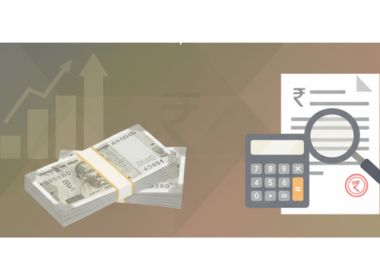Search Suggestions
- Gold Loan
- Money Transfer
- Mutual Funds

How Fluctuations in Gold Prices Can Impact Your Gold Loan?
Gold, the timeless symbol of wealth and security, has adorned our lives for centuries. But beyond its aesthetic allure, gold also holds immense financial value, making it a popular choice for securing loans. However, the very essence of its appeal – its preciousness – is tied to its ever-fluctuating price, which can significantly impact your gold loan experience. So, before you pledge your golden treasure, understanding the dance between gold loan price and market fluctuations is crucial.
Imagine this: you need urgent funds and decide to leverage your family heirloom, a 20-gram gold necklace, for a gold loan. But what happens if the gold price dips a month later? The value of your pledged gold reduces, potentially putting you at risk of a margin call – a situation where you need to top up the loan amount to maintain the loan-to-value ratio. Conversely, a price increase could work in your favor, allowing you to repay the loan early or even access a higher loan amount.
This is where the intricate relationship between gold loan price and market fluctuations comes into play. Let's delve deeper into how these fluctuations can impact your gold loan:
1. Loan Amount and Margin Calls:
As mentioned earlier, the loan amount you receive is directly tied to the current gold rate today. A higher gold price translates to a higher loan amount, while a dip can lead to a lower loan offer. This is because lenders consider the value of your pledged gold to determine your creditworthiness and set the loan limit. Remember, gold loans are typically offered at a loan-to-value ratio (LTV) of 75-90%, meaning you can borrow up to a certain percentage of your gold's value. So, if the gold price falls, the value of your pledged gold decreases, potentially triggering a margin call from the lender. This requires you to either deposit additional cash or gold to maintain the LTV, or risk having your loan recalled.
2. Interest Rates and Repayment:
While gold price fluctuations primarily impact the loan amount and margin calls, they can also indirectly affect your interest rates. Some lenders might adjust their interest rates based on market trends, although this is not a universal practice. However, a sharp decline in gold price could lead to lenders tightening their eligibility criteria or increasing interest rates to mitigate potential risks. This can make your gold loan more expensive in the long run.
3. Early Repayment and Additional Borrowing:
On the flip side, if the gold price increases, you benefit from a higher gold loan price. This opens up the possibility of early loan repayment with reduced interest burden. Additionally, you might be able to access a higher loan amount against the same pledged gold, provided you meet the lender's eligibility criteria.
Navigating the Fluctuations:
So, how can you navigate the ever-changing gold market and make informed decisions about your gold loan? Here are some tips:
- Stay informed: Track gold rate today and long-term trends to understand market movements.
- Choose a reputable lender: Opt for lenders with transparent policies and competitive interest rates.
- Calculate your repayment carefully: Consider the interest rate, loan term, and potential margin calls before borrowing.
- Don't overborrow: Only borrow what you can comfortably repay, factoring in potential price fluctuations.
- Explore alternatives: Consider other loan options if you're concerned about gold price volatility. Remember, a gold loan is a financial tool, and like any tool, it requires careful handling. By understanding how gold loan price interacts with market fluctuations, you can make informed decisions and leverage your gold's value to your advantage.
- Avail gold loan
- Calculate Gold Loan
- Check Gold rate today
- Gold Loan Eligibility
- Interest Rate
- Gold Loan Scheme
- Custom Offers
CATEGORIES
OUR SERVICES
-

Credit Score
-

Gold Loan
-

Personal Loan
-

Cibil Score
-

Vehicle Loan
-

Small Business Loan
-

Money Transfer
-

Insurance
-

Mutual Funds
-

SME Loan
-

Corporate Loan
-

NCD
-

PAN Card
-

NPS
-

Custom Offers
-

Digital & Cashless
-

Milligram Rewards
-

Bank Mapping
-

Housing Finance
-

#Big Business Loan
-

#Gold Loan Mela
-

#Kholiye Khushiyon Ki Tijori
-

#Gold Loan At Home
-

#Sunherisoch
RECENT POSTS

Ways to Improve Your Personal Loan Eligibility
Know More
What is Short-Term Capital Gains (STCG) Tax in India?
Know More
What is Professional Tax? Meaning & Importance
Know More
Financial Leverage Explained: Types, Formulas & Examples
Know More
What is Cash Management? Meaning, Objectives & Key Components
Know More
Tax on Gold in India: Everything Buyers Must Know
Know More
What is Equity Capital and Why is it Important for Business Growth
Know More
How to Get a Pre-Approved Personal Loan? Step-by-Step Guide
Know More
Why Are Gold Loans the Best Option When Banks Reject Your Personal Loan?
Know More
Struggling with low CIBIL? Here’s How a Gold Loan Can Still Get You Funded
Know MoreFIN SHORTS

The Best 7 SIF Funds of 2026: A Better Way to Invest
Know More
Gold Price Hits ₹1,40,000: How It Impacts Gold Loan Amounts
Know More
How to Check Loan Number: Step-by-Step Process
Know More
How to Open an SIP Account: Online and Offline Process
Know More
How Do I Apply for MSME Certification Online in India?
Know More
7 Important Reasons to Choose Hallmark Gold When Buying Jewellery
Know More
What Are Co-Pay and Deductibles in Insurance Policies?
Know More
Should You Take a Loan Against Your Mutual Fund or SIP?
Know More
Top 5 Best Mid-Cap Mutual Funds to Watch in 2026
Know More
Are Personal Loans Right for Retirees? Key Points to Consider
Know More
What Happens to a Personal Loan After the Borrower Dies?
Know More
Best Loan Choices for Credit Scores of 580 and Below
Know More- South +91 99469 01212
- North 1800 313 1212


